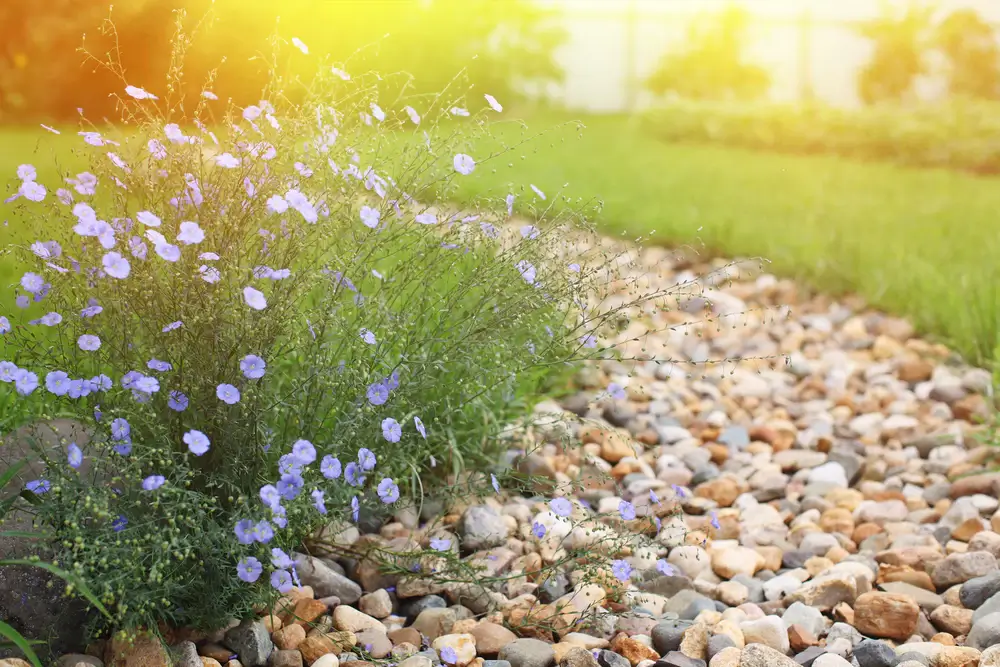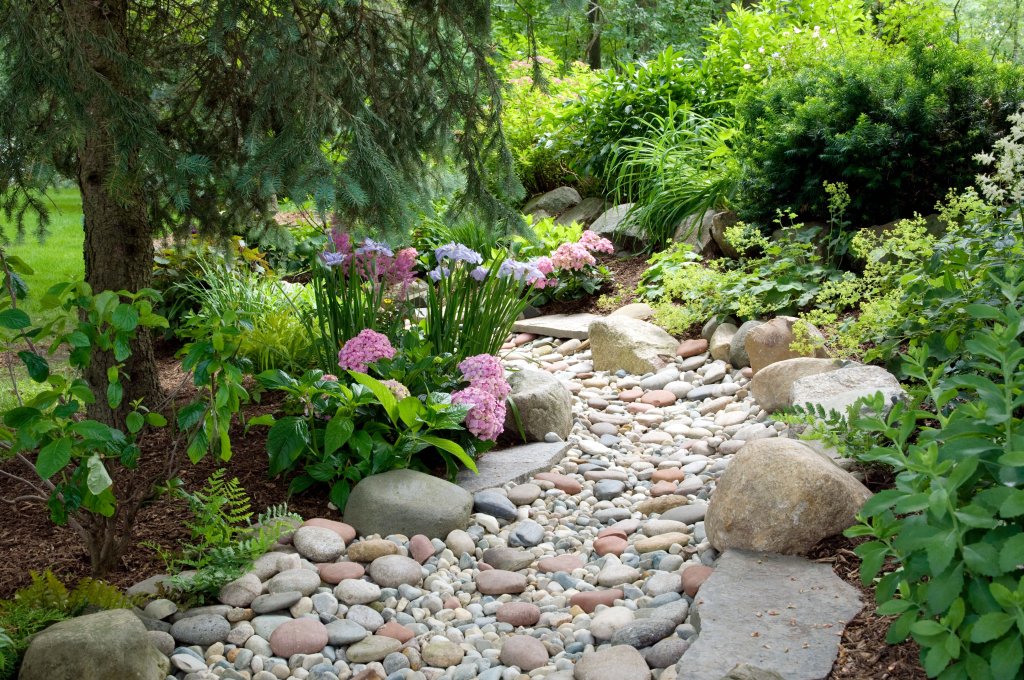Well, what is your understanding of a ‘dry creek bed?’ Let us help you have a better understanding of the same. The dry creek bed is a dry stream bed and a landscaped feature.
Here, we use rocks obtained from riverbeds to mimic the looks of a stream’s river bed or a creek bed look-alike.
These are trenches lined with stones and pebbles of different sizes and shapes to give a rocky terrain ambiance.
You also have plant beds that are done and surrounding the dry creek bed. Sometimes, a thick grassland pasture surrounds the artificial stream bed to give it a more natural look.
Let us unveil different techniques for landscaping the fabric to re-create dry creek beds astonishingly. Helping you get started with the same:

Purpose of Designing the Landscape for Dry Creek Beds
When it comes to maintaining dry creek beds, this is excessive weed growth. The voluminous weed growth can defeat the purpose of getting a dry creek bed done.
Therefore, it adds to the maintenance costs for land owners wanting to maintain the land beds over a longer time.
To maintain the land-based creek beds, you must design a landscaping fabric. The landscaping fabric protects the creek beds from further deterioration.
The landscape fabric acts as a protective shield that not only safeguards the dry creek beds from the formation of molds or different weed growths but also helps the soil area breathe itself.
Install a Front Yard Dry Creek Bed
To install a front yard dry creek bed and landscaping perfectly, you must know the outlining steps that go with the same. You can use a professional type of landscape fabric that comes to you with absorbent properties. You must choose a landscape fabric to prevent excessive weed growth comprehensively.
The landscape sheet prevents weed growth by cleverly blocking sunlight. Choosing the G Peter Garden weed barrier helps prevent new weeds’ growth near the land creek bed’s surface area.
The invasive weeds also wither away at the landscaping sheet, completely blocking sunlight from falling on the weed growth area. Henceforth, it is easier for landowners or gardeners to collect and dispose of the dead weed plants precisely.
Before you install a landscaping fabric, the ground must be treated chemically. The roots must be eliminated before the fabric is laid on your front yard garden area. The soil will continue to receive water and nutrients to support the growing plants in your garden area. The geo fabric prevents excessive weed growth from accumulating in your garden spaces.
Steps Involved to Install Your Very Own Creek Bed
To get a landscaped fabric done to perfection upon your dry creek bed, these steps must be followed.
Helping you get started with the same:
1. Design Creation
As a matter of fact, most of the dry creek beds inside garden areas follow the ‘S’ design. This is the most common style that is found in home-based gardens. Now is the time to put your efforts into serious action. You must dig in 12-15 inches of the ground below the soil, which can be done using your garden shovel.
Do you want to build landscaping for the dry creek bed to prevent excessive water draining? Then, you must build the fabric, keeping the curve of the existing creek bed intact and subtle.
2. How Do You Install the Fabric?
You may have to use a sledgehammer to tamper the surface area of the ground wherein you plan to install one. You do so as you need to find the angles wherein the fabric may have to be installed. At the same time, you must also have defining parameters of what you will do with the flat surface area.
The G-Penter Garden Weed barrier is the ideal landscaping choice as this is a geo fabric woven to perfection. Its permeable features help keep the soil’s nutrients intact by durably maintaining the soil’s gravel. You will be surprised to see that the features of the landscaping fabric remain undisturbed even if it is exposed to adequate foot traffic.
3. Filling the Creek Area with Rocks and Plants
Now is the time to fill the land-based creek bed with pebbles and river-based rocks. You can also fill the area with pea-gravel or Scottish cobbles for an aesthetic and pretty-looking appeal.
You can add draught-tolerant plants to the surrounding area to enhance the visual look of the space you recreated. You can add pretty-looking succulents if the local climate prevailing in your area supports their growth. At the same time, you may trim your plants from time to time so that they do not overcrowd the dry creek bed’s area.
Concluding Lines
We have seen several aspects of what a dry creek bed is all about. The functional aspects of maintaining dry creek beds near your garden beds have also been discussed.
You must also remember to build a landscaping fabric surrounding the creek beds to control excessive weed growth from tampering with the creek bed area.
You can add pretty-looking plants to the beautiful look surrounding dry creek beds. Front yard dry creek bed landscaping must be done after you figure out which fabricated material you will go in for.
It must have geo-friendly properties to support your soil area, too.

